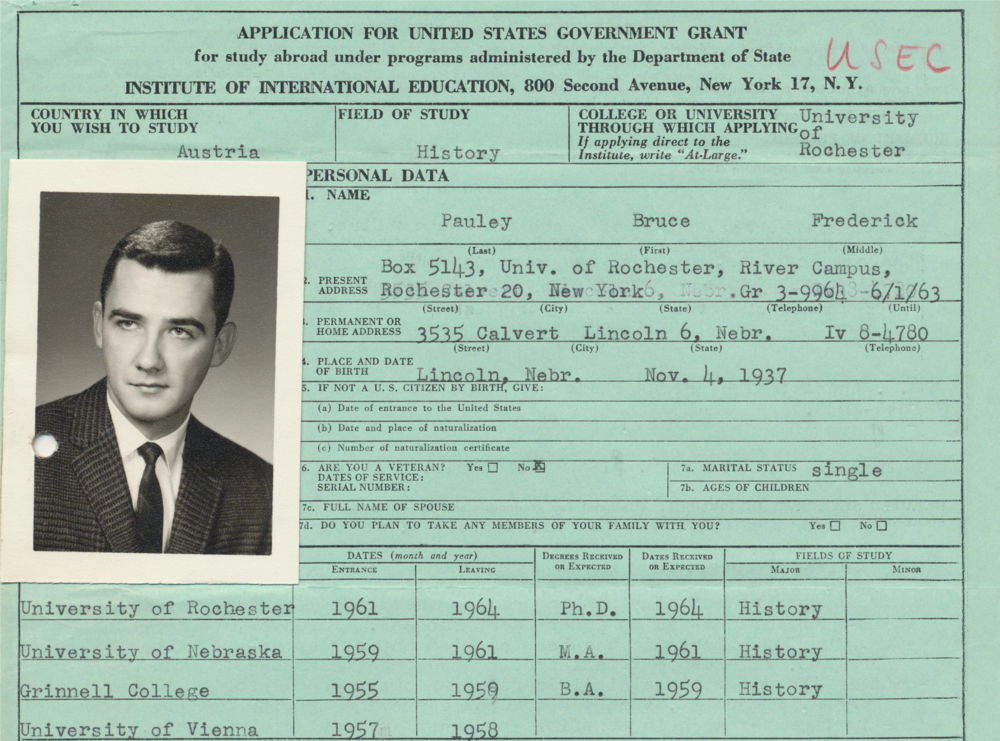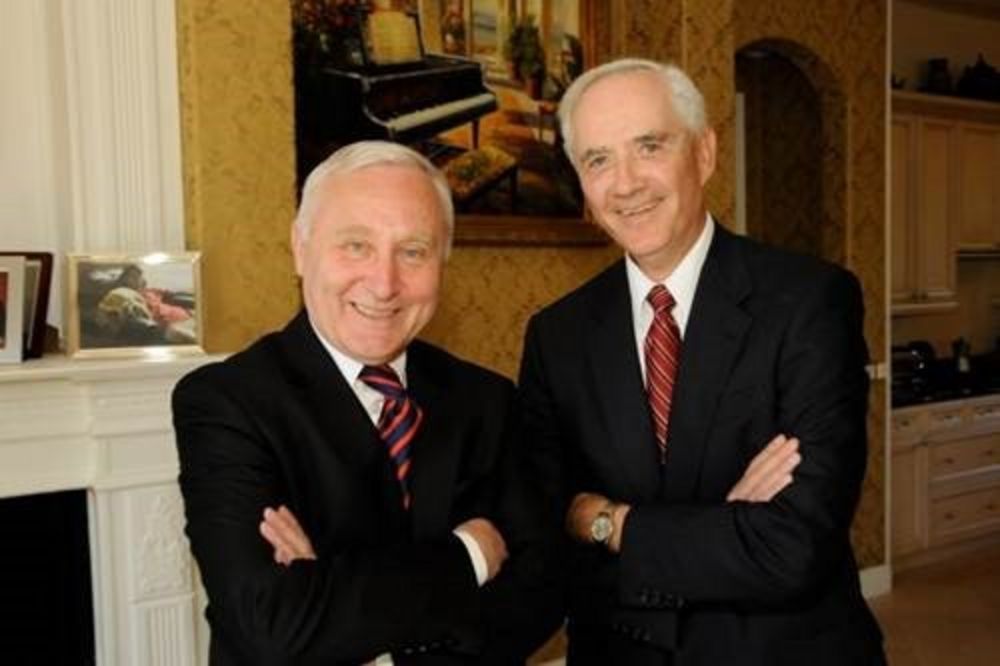I would like to take this opportunity to share a few personal reflections about the impact of the Fulbright Program on the life and career of Bruce Pauley, one of our distinguished alumni from the early 1960s and professor emeritus of history at the University of Central Florida. He is widely recognized as one of the major American historians of Austrian history in his generation, a doyen in the field of Austrian studies, and the first major donor to Fulbright Austria. At the beginning of June, he visited Vienna with his wife, Marianne, and their two grandchildren and held a fascinating lecture at the Amerika Haus. This is a brief version of Bruce Pauley’s Fulbright story.
As a high school student from Lincoln, Nebraska, Bruce Pauley took a three-month trip to Europe with his parents in the summer of 1954 and audaciously informed his parents upon returning home that he was going to become a historian. The first indirect contact he had with the Fulbright Program was as an undergraduate at Grinnell College in Iowa in the mid-1950s, when he enrolled in the fledgling Institute of European Studies program in Vienna during the 1957-58 academic year. This study abroad program for American undergraduates was established by Paul Koutney, a proto-Fulbright grantee from Austria who had studied at St. Thomas College in St. Paul, Minnesota, in the earliest days of the Fulbright Program in 1949-50. Koutney was a genuine pioneer in the field we now call “study abroad.” Animated by his Fulbright experience and the Fulbright idea, Koutney established the first US study abroad program in Austria upon returning to Vienna. In the decades since its founding father created the institute, the Institute of European Studies has rebranded as IES Abroad and become a global operation with thirty centers worldwide, making it one of the largest study abroad providers in the United States today.
Bruce did coursework at IES Vienna and the University of Vienna, learned German, and lived with an Austrian student named Walter Siegl, who was a nephew of Koutney’s wife, Brita. (He and Walter became lifelong friends, and Walter went on to have a distinguished career in the Austrian Foreign Service.) Bruce retrospectively called this undergraduate year in Vienna a “great awakener”: a transformative experience that was to determine the trajectory of his entire career.
After graduating from Grinnell, Bruce went on to complete a master’s degree in history at the University of Nebraska and then enrolled in a PhD program at the University of Rochester. He studied under Arthur J. May, one of the most legendary American historians of the Habsburg Empire in the United States at the time. This led him to apply for a Fulbright grant to spend a research year (1963-64) in Graz. In the course of his research, the focus of his dissertation mutated from the idea of an urban history of Graz during the Dual Monarchy, 1867-1918, to a regional study of the relationships between the evolution of indigenous, conservative, right-wing, paramilitary organizations in Styria – the so-called Heimwehr – and the Austrian Nazi Party in the interwar period.


 Austrian Ambassador to the US Christian Prosl (l.) and Prof. Pauley at the Austrian Cross of Honor award ceremony in Orlando, March 2010
Austrian Ambassador to the US Christian Prosl (l.) and Prof. Pauley at the Austrian Cross of Honor award ceremony in Orlando, March 2010